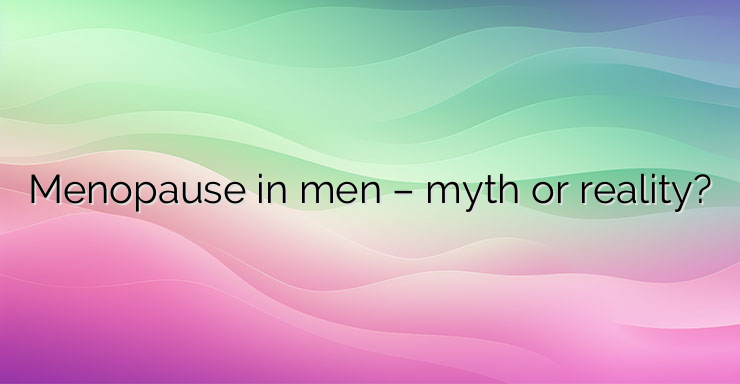Androgens, which are produced by the testes and adrenal glands, play a major role in male sexual and reproductive function. Adequate androgen synthesis in the neonatal period and then in puberty is of particular importance for the development of the male sex organs – testicles, prostate and penis. After puberty, testosterone is required to maintain male sexual function, muscle mass, bone mineralization, fat metabolism, and cognitive function. A critical level of testosterone in the testicles itself is necessary to maintain proper spermatogenesis and, accordingly, fertility in men. Immediately after birth, serum testosterone levels reach those of adults and remain so for several months. Then, until puberty, testosterone levels remain low to prevent childhood virilization. A pulse of gonadotropin-releasing hormone released by the hypothalamus has a stimulating effect on the pituitary gland and further along the chain of the sexual axis – the testicles. As a result, testosterone levels rise and puberty is triggered. Usually, the peak of testosterone levels is observed around the age of 20, and after the age of 30 there is a gradual decrease in its levels. There is evidence that after the age of 30 there is a steady decline in testosterone levels of about 1% per year. Late-onset hypogonadism is a condition associated with declining testosterone production in men that occurs with age. In popular literature, the condition is also called “andropause” or “male menopause”. It is a relatively rare condition in adult men and is diagnosed when the 3 symptoms are present – reduced frequency of morning erections, reduced libido and erectile dysfunction in combination with low levels of total testosterone < 11 nmol/l and free testosterone < 220 pmol /l. Men with this condition may also report muscle loss, decreased physical activity, lack of energy, weight gain, hair loss, hot flashes, decreased fertility, sleep disturbance, decreased concentration, irritability, and depression. Many of these symptoms can be attributed to long-term unhealthy lifestyles, such as smoking, overeating, lack of physical activity, and excessive alcohol consumption, and therefore do not fall under the above criteria for diagnosis. Some patients may report the presence of symptoms without an actual reduction in testosterone levels, while in others the reduced testosterone levels are not accompanied by the characteristic symptoms. NEWS_MORE_BOX Testosterone levels are measured early in the morning (between 8 and 10 a.m.) because it is a hormone whose levels change throughout the day. According to international recommendations, when several of the listed symptoms persist in adult men, it is appropriate to measure testosterone levels. Men with established severe hypogonadism are also recommended to be screened for osteoporosis.Treatment The issue of testosterone replacement therapy in men with established late-onset hypogonadism is controversial. According to the American Food and Drug Association, the benefit and safety of testosterone treatment in these men has not been established. Replacement therapy should only be considered for confirmed low testosterone levels. Its side effects may be an increased risk of cardiovascular events (heart attack and stroke), especially in men over 65 years of age or with established cardiovascular disease. Before starting such therapy, PSA (prostate-specific antigen) must be tested to rule out prostate cancer and hematocrit, whose elevated levels are a contraindication for testosterone replacement.


Leave a Reply